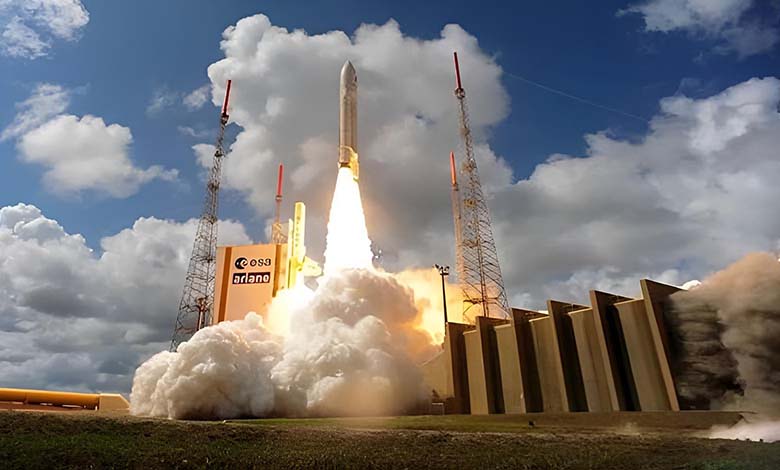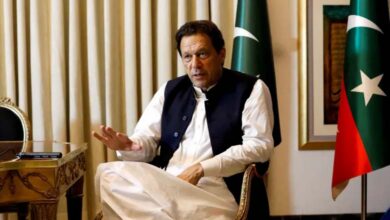The space arms race: Europe raises the banner of deterrence from above

Europe is moving rapidly toward building a defensive space shield designed to protect military and communication satellites from potential Russian or Chinese attacks. This unprecedented step reflects the continent’s growing awareness of the technological and military stakes of space dominance.
-
French experts count on a European role to ensure lasting peace in Gaza
-
Hovering over its killer factory: drones threaten Europe’s arms-makers
Scheduled for launch next year, the project directly responds to intelligence reports warning that Russia has been tracking British and German satellites, while China is developing advanced space warfare capabilities believed to surpass Western ones in both accuracy and effectiveness.
The initiative forms part of the European Defense Roadmap through 2030, which aims to prepare NATO for future warfare, according to The Times.
The document outlines four main priorities: countering drones, strengthening Europe’s air defenses, developing space defense capabilities, and protecting the eastern flank of the continent.
-
After the Arrest of a Hamas Cell in Berlin: The Brotherhood’s Danger Infiltrates Europe
-
Hamas and the Muslim Brotherhood: A Persistent Security Threat to Europe
It stresses that lasting peace in Europe can only be achieved through an effective
deterrence strategy and that rapid technological development has become the key determinant of global power balances.
Countries that develop their defense technologies domestically will be “the strongest and most independent,” especially in strategic fields such as drone systems, satellites, and autonomous vehicles.
-
Drone Fear: Four Armies Deployed to Guard European Leaders’ Summit in Copenhagen
-
The FCAS crisis: a European rift threatening defense cooperation and the next-generation fighter jet
A satellite in orbit
The announcement coincided with explicit warnings from Major General Paul Tedman, commander of the British Army’s Space Command, who revealed that Russian forces have been tracking and attempting to disrupt British satellites.
Similar warnings were issued in Germany last month concerning Russian attempts to infiltrate military communication systems.
In response to these threats, NATO and its European allies are working on advanced positioning and navigation technologies enabling precision strikes, troop tracking, search and rescue missions, and early warning systems capable of detecting and monitoring missile launches from space with extreme precision.
-
European Forces Under U.S. Command?
-
The Muslim Brotherhood in Europe and Youth: An Extensive Arm with 31 Branches and a Structured Recruitment Strategy
The document also identifies Ukraine as Europe’s first line of defense, emphasizing that Russia’s military campaign has reached unprecedented levels of brutality. What it calls “hybrid warfare” – cyberattacks and airspace violations – has become a daily challenge to European security.
Yet this defensive shift has not been free of internal tensions. In recent weeks, disagreements have emerged between the European Union and NATO’s military planners, who accused the European Commission of overstepping into areas of military planning and operations traditionally reserved for the alliance.
-
Stealth Fighter V: A European Birth Beyond the American Umbrella
-
“Military Service”: Europe’s Concerns Drive towards “Mandatory” Service
Some European capitals fear that creating a parallel EU defense structure could result in duplication and confusion in NATO decision-making. As one European diplomat warned, “The last thing we need is for the security threat to be used for political gain within the Union. That would not strengthen Europe’s security but further complicate the strategic picture.”
To ease these tensions, NATO Secretary General Mark Rutte has held a series of meetings with EU defense ministers over the past six weeks, resulting in an agreement to delineate responsibilities: NATO will retain military and operational leadership, while the EU will handle industrial regulation, procurement, and defense financing to ensure complementary objectives.
-
Why Is It Time to Reconsider the Creation of a European Army?
-
Discover the 10 Most Powerful Armies in Europe: The United Kingdom in First Place
A satellite in orbit
Following his latest meeting with EU defense ministers, Rutte stated, “We are working in perfect harmony, with close coordination between both sides, and progress is moving in the right direction.”
In parallel, Germany and France signed an agreement to launch a new satellite-based early warning system called Odin’s Eye, designed to enhance Europe’s ability to detect and intercept enemy missiles at the moment of launch.
-
Ukraine’s Bell Rings across Europe: Cooperation to Build a Defense Industrial Base
-
World War Preparations? Europe’s Weapons Stuck on the Rails
Through these steps, Europe appears to be seeking genuine strategic independence from the American defense umbrella, increasingly aware that future conflicts will not be decided solely on land, sea, or air—but also in space. As European defense experts point out, tomorrow’s battles may begin in orbit before breaking out on the ground, making the “European space shield” a defining symbol of a new era in the 21st-century arms race.












